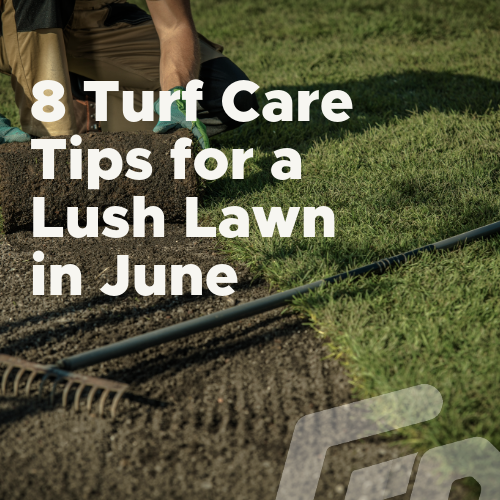- Lawn Turf
- Artificial
- Soil
- Timber
- Composite Decking
- Paving & Stone
Get In Touch With Our Experts Today!
Give us a Call! - Seed & Fertiliser
- Dressing
- Bark

May 29, 2025
As June heats up, you will find that June’s blissful blend of sunshine and rain keeps us busy tending to our gardens. For landscapers, client work is ramping up with lawn installations, garden transformations, and maintenance work. For homeowners, we’re keen to do all we can to enjoy a full and vibrant lawn. To make life easier, we’ve pulled together our 8 top turf tasks for June to help you grow, mow and maintain a wonderful summer lawn!
By keeping on top of these 8 easy gardening tasks, you can help your turf thrive and survive the summer.
As summer takes hold, you’ll notice your lawn rapidly growing. Regular mowing encourages a thicker growth, suppresses weeds and stops your lawn from looking wild and overgrown. Plus, your turf will thank you for it! If you have a busy week and the grass has grown considerably, it’s best to cut the grass in two passes rather than one for a smoother, neater finish.
This is a gardening job many people either forget to complete or choose to skip. But it’s one of the most essential tasks as it can make all the difference to the look of your lawn. A clean, sharp edge helps define your landscaping and keeps your lawn looking fresh and healthy. Use a strimmer to easily trim the edges after mowing.
The ground can become extremely dry if we’re experiencing a very hot summer with minimal rainfall. Mowing while your soil is stressed by the heat can cause more harm to your turf. But the main reason we leave our grass longer during hot, dry summers is that the grass blades can shade the soil from heat and drought.
Warm weather offers the perfect opportunity to strengthen your lawn by feeding it. A high-quality summer fertiliser can help repair any damage or stressed turf and help encourage turf growth that is strong and resilient. Our Envy summer fertiliser uses an advanced formula ideal for summer growth and provides a slow release for maximum impact. This means nutrients are released slowly, allowing even coverage at a low application rate.
If you’ve yet to aerate your lawn, now’s the time! A lawn should be aerated at least once a year. Spiking the turf with a garden fork may sound simple, but the impact is significant. Aeration releases stale carbon dioxide from the soil whilst inviting fresh oxygen-rich air in. It also helps water and nutrients reach the grass roots, which keeps them healthy, encouraging thick, bright, and resilient turf.
Whilst your turf is well on its way, so will those infuriating weeds. Depending on the number of weeds within your lawn, you may want to apply a weed killer to specific areas (spot treatment) or remove obvious large weeds by hand or with a weed-puller. If your weed situation is worse, a full treatment can be carried out; however, we wouldn’t recommend you do this more than twice per year. Keep an eye on the weather, and choose a day with minimal rainfall to carry out a full treatment effectively.
Well-established, healthy turf can often survive the heat without watering; it’s already created a hardy root system that enables it to access water from underground to hydrate the grass, even during a drought! However, new lawns take a while to develop their root systems. If you’ve recently laid turf or are looking to lay turf in June, it’s important to water your fresh turf every day, especially if there’s no rain. Your soil should be moist to the touch. So, if it’s dry, get the hose or sprinkler on it – watering in the morning or evening or optimum absorption.
Our blog on how often to water new turf will tell you everything you need to know.
Scarifying refers to the process of removing thatch from the surface of your lawn. In cooler, cloudier months, we encourage scarifying so more sunlight can reach your grass and roots. In the summer, while temperatures are high, scarifying can cause more harm to your turf as you’ll be exposing the soil to too much direct sunlight. And if we’re lucky to have a steady stream of sunshine, there’s little time for your turf to recover. Leave a little thatch across your lawn to help shelter it from heat damage and drought.
Absolutely! Many gardeners and homeowners opt to lay turf in June because the weather is nicer, and you don’t mind being outside. But there are some steps you must follow if you choose to lay turf in June:
Looking to lay a new lawn this June? Explore our natural grass turf products to find the right turf for your garden or landscaping project.
If you need extra help preparing and maintaining your summer lawn, get in touch with the GDT&S team today. If you’re seeking a new garden look this year, check out our range of turf, timber and paving to inspire and create your dream garden.
For landscapers seeking high-quality turf for their clients and reliable delivery times, check out our George Davies Trades Account.
CALL US NOW ON 01234 818 253